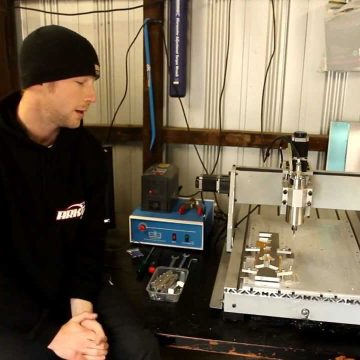Light detection and ranging (Lidar) technology is a remote sensing strategy that utilizes a pulsed laser to measure variable distance (range). The technology is used in various fields, including geomatics, surveying, forestry, geodesy, geology, atmospheric physics, and airborne laser swath mapping, to mention a few. The automobile industry is among the big winners as Lidar tech continues to evolve. LiDAR technology has proven to be an invaluable sensing method in the automotive industry.
Semi/fully autonomous vehicles use various sensor technologies. For end consumers, camera vision might seem like the top tech solution, but that is far from the truth. Camera vision and radar technology are standard in mobility applications. Nonetheless, they have many downsides. The cameras, for example, provide high-resolution information, but only in 2D. This means there is high dependence on robust artificial intelligence and relevant software to translate the data into 3D.
The cameras’ effectiveness is subject to lighting. If the lighting conditions aren’t good, it can affect the camera vision technology. This means that the results aren’t as dependable. Radar is more reliable since it provides velocity and distance measurements in all weather conditions. Nonetheless, it lacks a resolution. This makes capturing and mapping finer details difficult, especially in the extended range.
With such limitations, Lidar technology continues to be an integral aspect. Among the top highlights that continue to propel Lidar tech’s use include:
Speed
Unlike cameras, lidar tech information doesn’t need to be interpreted or deciphered. This translates to faster processes which increases the direct distance measurement speed. This makes it easier for mobility solutions to identify obstacles with fewer processing requirements.
Moreover, the sensors send and receive back the laser pulses in nanoseconds. This makes it easier to scan and map a large area within a short period. This is all without affecting the volume and data quality. Such speed is essential, especially considering how fast automobiles can move. With the need to avoid obstacles for safe navigation, Lidar remains a reliable solution.
Accuracy
Lidar technology’s effectiveness is not subject to lighting. Moreover, the technology can collect data in various locations that are not as accessible. This includes areas such as dense forests, among other hard-to-scan areas. Regardless of the weather, lighting, and other challenges, Lidar delivers accurate and consistent results.
The tech can create precise 3D models. This is even for smaller objects using short wavelengths. It establishes what the objects are, for example, a wall, tree, or animal. While it collects and generates massive measurements quickly, Lidar can be accurate down to a centimeter. This makes it an invaluable tool in mobility solutions. It makes it easier and safer to navigate a range of environments. This is since obstacle detection, and avoidance are improved with accurate and reliable information.
Cost-effectiveness
Development and production of semi/fully autonomous automobiles take considerable costs. It is among the significant roadblocks that continue to impact their popularity. Only a few people can afford the cars, derailing their progress. Nonetheless, cutting corners can’t be entertained. This is considering the impact of such corrupt practices, especially as you can’t put a price tag on users’ safety. Without dependable technology, autonomous cars could cause significant problems, including loss of life.
While looking for ways to lower the costs, Lidar technology offers a lot. The tech does not need significant resources. This is since there is no need for interpreting or deciphering the information generated. It generates 3D and accurate information that is usable.
Moreover, with speed, the tech can scan and map a vast area. This means there is no need for more processes to allow safe navigation. Lidar technology saves costs with its resolution, accuracy, and low-light performance effectiveness. It offers an affordable and reliable solution in the mobility industry, from fast-moving cars to slower operations regardless of the environment.
Today, you can find innovative lidar technology, including 4D, offering camera-level ultra-resolution. With compact designs and improved capabilities, the advancements continue to emphasize Lidar’s effectiveness in the mobility industry, helping develop reliable self-driving cars.
Self-driving cars are the future, and every serious manufacturer realizes the need to complement their existing sensor suite for better solutions. Radar, camera vision, and ultrasonic technologies are effective. Nonetheless, they fall short in various areas. This is where the lidar sensing approach comes in. It complements the sensors and helps deliver reliable detection and ranging solutions.

















